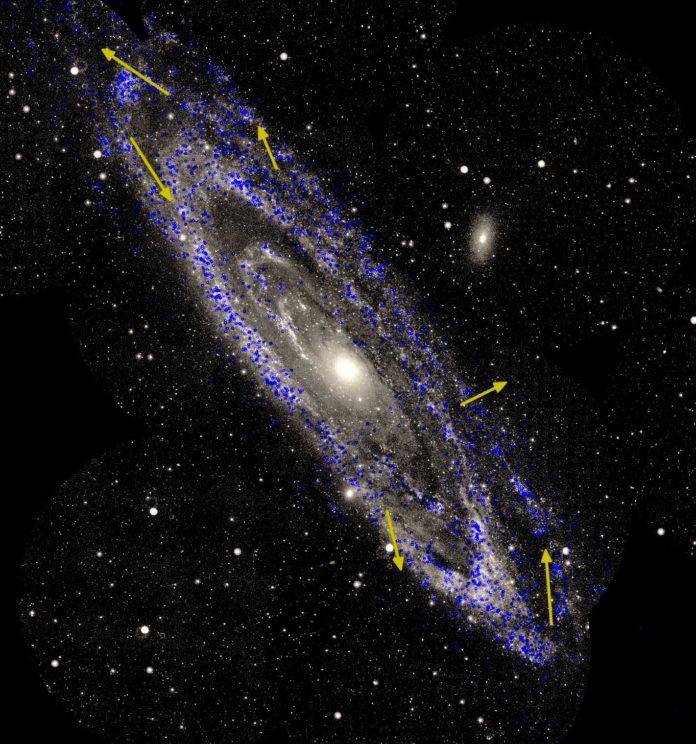According to a new study, the galactic collision of Milky Way with its largest neighbor, the starry Andromeda, will happen earlier than previously thought. The collision will happen within the next 3.9 billion years.
Earlier, it was suggested that the collision will happen about 4.5 billion years from now. But the new data provided by European Space Agency’s Gaia spacecraft suggests crucial insights into the way in which galaxies evolve and interact.
Roeland van der Marel of the Space Telescope Science Institute in Baltimore, USA said, “We needed to explore the galaxies’ motions in 3D to uncover how they have grown and evolved, and what creates and influences their features and behavior. We were able to do this using the second package of high-quality data released by Gaia.”
A few weeks back, another study report had suggested that Milky Way will collide with Large Magellanic Cloud (LMC) within the next 2.5 billion years, 1.4 billion years before the estimated collision with Andromeda. Milky Way is more than 1,00,000 light year wide, while the LMC is just 14,000 light years wide. As the collision happens, Milky Way will devour the LMC without any kindness.
As Andromeda’s motion differs somewhat from previous estimates, the galaxy is likely to deliver more of a glancing blow to the Milky Way than a head-on collision. This will take place not in 3.9 billion years’ time, but in 4.5 billion – some 600 million years later than anticipated.
Timo Prusti, ESA Gaia Project Scientist said, “This finding is crucial to our understanding of how galaxies evolve and interact.”
“We see unusual features in both M31 and M33 (Andromeda and Triangulum galaxies), such as warped streams and tails of gas and stars. If the galaxies haven’t come together before, these can’t have been created by the forces felt during a merger. Perhaps they formed via interactions with other galaxies, or by gas dynamics within the galaxies themselves.”
“Gaia was designed primarily for mapping stars within the Milky Way — but this new study shows that the satellite is exceeding expectations, and can provide unique insights into the structure and dynamics of galaxies beyond the realm of our own. The longer Gaia watches the tiny movements of these galaxies across the sky, the more precise our measurements will become.”
Moreover, gathering data release from Gaia, scientists also determined how Andromeda and Triangulum are each moving across the sky. They also gauged the orbital path for each galaxy both backward and forwards in time for billions of years.
Calculating velocity, they found that M33 cannot be on a long orbit around M31.
Co-author Ekta Patel of the University of Arizona, USA said, “Our models unanimously imply that M33 must be on its first infall into M31.”
“While the Milky Way and Andromeda are still destined to collide and merge, both the timing and destructiveness of the interaction are also likely to be different than expected.”
